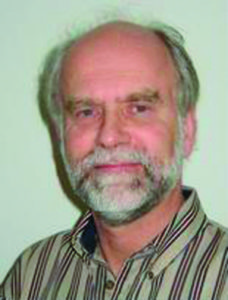
When Governor Brown is talking about the Chinese coronavirus pandemic, she is likely correct, although a bit melodramatic. When she is talking about Global Warming, she has no idea about the science. NONE. Such is the credibility issue that the nation’s Democratic Governors face in addressing the virus. Although they have primary responsibility for the health and welfare of state residents, they have previously demonstrated very little sense of reality and no sense of the science.
This has led some physicians who are far more expert than our Governor to question the draconian measures that have been put in place to try to slow the spread of the virus. Are the measures merely extending the length of the pandemic to lessen the peak number of cases? Yes, such measures may prevent our healthcare facilities from becoming overloaded and therefore lessen the number of fatalities due to inadequate care.
But will these measures reduce the percentage of our population ultimately infected? Somewhat, but not as much as we would like, because this virus is highly infectious. Of course, the longer the pandemic lasts the more time we have to figure out the best treatments and develop a vaccine. France just approved a treatment (and the United States followed suit at the end of March) involving hydroxichloroquine and azithromycin, both well-established medicines available in generic form. More about this exciting development below.Will the ‘Social Distancing’ measures advocated by everyone from President Donald Trump to governors and state health authorities damage our economy? Yes, they already have and will continue to do so, the longer ‘Stay-at-Home’ orders remain in effect. That also harms the well-being of our state, even if it proves capable of slowing the spread of the virus. Hence the need to get most back to work as soon as it is reasonably safe to do so. That will not occur in April, as President Trump has extended his Social Distancing campaign through the entire month. His hope of reopening parts of the economy by Easter will not occur.
The problem is not so much the increase in cases, but the increase in deaths in the USA. Cases exploded in the USA in late March, due both to increased infections and to increased testing. Hence, some of the alarming increase has just now become visible. The dramatic increase in the death rate is very real.
As of late March, the death rate was doubling every three days. This reflects infections that began in mid-March, and if they continue to double every three days will go up by a factor of more than a thousand in April. That means that the death rate could reach a million Americans per day by the end of April. This is an absolute worst case that is very unlikely, because Americans are now taking precautions.
Dr. Anthony Fauci, director of the National Institute of Allergy and Infectious Diseases at the National Institutes of Health, just predicted that we may reach 100,000 to 200,000 total deaths in the USA by the end of April, and reach 1.7 million deaths before the epidemic is over.
That is much less than my simple exponential extrapolation, because Fauci is assuming that Social Distancing will slow the spread of the virus, such that the death rate will not continue to double every few days. The Spanish Flu of 1918 demonstrated the value of keeping people separated to avoid a rapid spread.
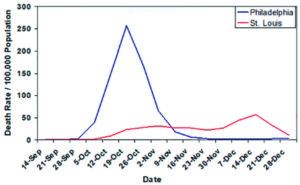
In that year, Dr. Rupert Blue, America’s surgeon general, urged local authorities to “close all public gathering places if their community is threatened with the epidemic.” St. Louis did so and never experienced the severe peak in deaths that Philadelphia did when it failed to follow the surgeon general’s advice. See Figure 1.
The Spanish flu eventually killed 675,000 Americans and perhaps 50 million people worldwide, at a time when the world’s population was one third of what it is today. When this H1N1 flu returned as the slightly different Swine flu pandemic in 2009, it caused only 150,000 to 500,000 deaths worldwide.
Because few people have any immunity to the Chinese coronavirus, and it is highly infectious, it’s impact is likely to be more like the Spanish flu than the Swine flu.
The Virus from Hell?
Let’s hope that Fauci is far too pessimistic, and we get beyond this pandemic as we have previous ones in recent years, with deaths only in the tens of thousands. That is what we typically experience with the seasonal flu.
Figure 2 shows that the Chinese coronavirus pandemic does not even show up as a spike above normal deaths for the
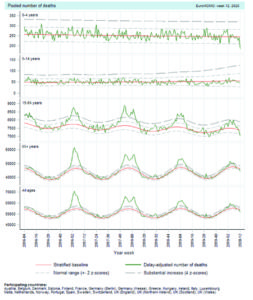
European Union, although it is visible for hard hit countries like Italy. This year’s flu season has been less consequential than preceding years. This leads accomplished physicians, like Dr. John Dale Dunn to conclude that the Chinese coronavirus is not the ‘Virus from Hell.’
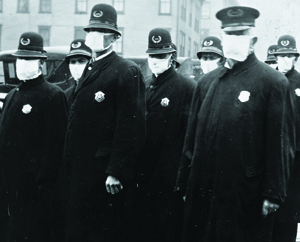
What about a Cure?
The ultimate cure for the Chinese coronavirus will be a vaccine. Unfortunately that is unlikely anytime soon, because the process of developing a vaccine takes about a year. By then, this virus will have done much of its damage.
So what do we do in the meantime? Besides isolating those most vulnerable, namely the elderly, and providing supportive care to those infected, we need to rapidly increase production of the medicines already known to lessen the chance of infection and decrease the impact of the virus, if not cure many patients. Another accomplished physician, Dr. Lee Merritt, has suggested that we move from an epidemiological approach to a medical one. She notes that many state Pharmacy Boards have warned physicians to stop prescribing hydroxychloroquine for themselves as a prophylactic. Now that it is approved by federal authorities at the urging of President Trump, such objections should cease.
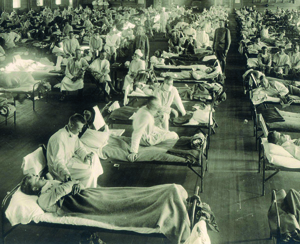
Because no one has long experience using hydroxychloroquine to fight the coronavirus, it might not turn out to be a ‘miracle cure.’ On the other hand, if it is only effective in half the cases of serious infection, it will still be better than most medicines. Possible exhaustion of available supplies is another problem that can be addressed.
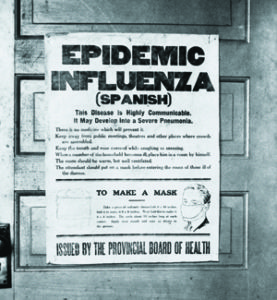
We know that hydroxychloroquine, when used properly to prevent malaria is safe and quite effective. I took it a quarter century back when visiting East Africa to climb the highest mountains in Africa, without complications and without contracting malaria.
George Washington would have understood.
During the Revolutionary War, General George Washington used the bark of the Cinchona tree to keep the Continental Army free of malaria symptoms when they ventured south to confront British Lieutenant General Charles Cornwallis in Virginia. There was no Food and Drug Administration to approve its use. But the Continental Congress, in one of its first official acts, appropriated $300 to purchase the bark.
The British had no such remedy and saw half of their soldiers succumb to the fever. General Washington had a substantial edge over Lord Cornwallis when he defeated him at Yorktown. Cornwallis apparently suffered from the fever himself.
The active ingredient in Cinchona bark was isolated decades after George Washington used it. It is now called “quinine.” More modern versions are known as chloroquine and hydroxychloroquine.
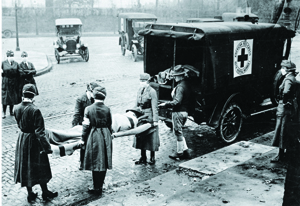
Our first and forty-fifth Presidents saw the great value in this medicine. We should too.
Let’s re-purpose the money being wasted on a fake crisis (Global Warming) to a real crisis (Chinese coronavirus). Eliminating just one of the many stupid windmills being built in Oregon would free up enough money to possibly prevent tens of thousands of deaths across the USA.
Gordon J. Fulks lives in Corbett and can be reached at gordonfulks@hotmail.com. He holds a doctorate in physics from the University of Chicago’s Laboratory for Astrophysics and Space Research and has no conflicts of interest on this subject.
No Comments
Leave a comment Cancel